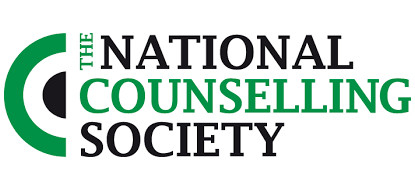When you think about narcissism’s key qualities, the two features that might first enter into your mind are grandiosity and the need for attention. Less evident, perhaps, is the sense of vulnerability that is also part of narcissism’s theoretical basis, potentially feeding into the self-inflated desire for recognition. As a personality trait, the quality of narcissism is one of a number of dimensions within personality along which people vary. As a personality disorder, however, narcissism reaches maladaptive proportions, leading the people who fit its diagnostic criteria to suffer a range of symptoms that interfere with their daily lives.
Individuals with high levels of narcissism as well as those with narcissisticpersonality disorder don’t live in a vacuum. The term “pathological narcissism” captures the relational aspects of narcissism.
As observed by the University of British Columbia’s David Kealy and colleagues (2022), in pathological narcissism, the individual’s rage at not being admired enough—along with a deep, underlying sense of inadequacy—can lead them to become domineering, quarrelsome, and vindictive. Defining pathological narcissism as “a dysfunctional personality style involving impairment in adaptive regulation of relatively positive self-image,” the Canadian researchers suggest that it is associated with the full range of maladaptive reactions from “self-concealment to admiration-seeking and debasement."
If you are in a relationship with someone high in pathological narcissism, or even have such an individual in your family, you know how challenging it can be to maintain your equilibrium. One day they might belittle and derogate you, but at other times they may seek to include you in their grandiose view of themselves and your relationship. They can be demanding of your attention, putting your needs on the back burner while they insist on having theirs met ASAP.
What Actually Happens in a Relationship with a Pathological Narcissist
It's the idea that pathological narcissism has a deleterious effect on others that led University of Wollongong’s Nicholas Day and colleagues (2022) to investigate the specific ways in which relationships are affected by this personality style. The Australian team used as their framework the idea of “Core Conflictual Relationship Themes (CCRT).” These can be found in the “specific relationship narratives” that people construct in describing both the characteristic ways in which people interact in a relationship as well as the “longed for outcomes of interactions."
You can best get an idea of what a CCRT might be if you put yourself in the place of someone (perhaps yourself) who has a family member high in pathological narcissism, and are asked to talk about a specific incident with that person. Your CCRT with this person would emerge as you relate the details of the incident ranging from where and when it occurred, who said or did what, and the outcome. Which event came into your mind? Maybe it's a time when your relative asked you a favor, such as making a main dish for a special occasion. You carried out your part of the bargain, and as everyone dug into your delicious dish, this family member became enraged that you received so many compliments.
Relationship Themes in Pathological Narcissism
The participants in the Day et al. study were 15 adults (average age 53 years old) who reported on 15 relatives (average 55 years old), and although the majority of participants were female (93%), the majority of relatives were male (73%). Most participants reported on their spouse (33%) or former spouse (40%).
Day and his associates used an approach called the Relational Anecdote Paradigm (RAP) in which they asked participants to produce a set of narratives for their relative. These narratives could be analyzed for CCRT’s. Their focus, then, was on those in relationships with pathological narcissists, not the pathological narcissists themselves.
After completing a measure of pathological narcissism answered in terms of “my relative,” the participants then went on to complete RAP’s for 5 separate incidents with this person, and 5 separate incidents for someone not their relative (e.g. a coworker). The research team then analyzed the resulting 133 narratives in terms of three categories of specific units: wishes, responses of other, and responses of self. Each unit, in turn, was rated as harmonious or disharmonious.
As an example, the authors offer up the following narrative:
My friend and I had dinner and my relative phoned me non-stop during dinner so that I had to keep excusing myself. I was embarrassed and did not attempt to visit with friends after that.
The wish in this example was to enjoy time with a friend, and the response from other was disharmonious (being pressured by the relative), as was response from self (feeling embarrassed, avoiding friends).
Turning to the results, the key findings involved the comparisons between RAP's with relatives vs. non-relatives. Overall, relationships with relatives were rated as more disharmonious than with non-relatives. In specific areas, the most disharmonious involved these 5 reactions from the other: unreliable, rejecting, subjugating, annoying, or attacking. Participants, for their part, described the interactions as least harmonious with respect to rejecting and withdrawing. In other words, pathological narcissists themselves behave in ways that lead to disharmony on the part of their closest relationship partners who, in turn, react by pulling away as much as possible.
These narratives describe, then, a discouraging perspective on what the experience is like of being close to someone high in pathological narcissism. As the authors concluded, “narratives with relatives with pathological narcissism involved escalating relationship conflicts, whereby both participants and relatives became increasingly confictually entrenched and disconnected, and relationship wishes remained unfulfilled." Relationships with non-relatives, by contrast, also had high levels of disharmony, but they were equally as likely to involve harmony, and conflicts were satisfactorily resolved.
What This Means for Pathological Narcissists in Your Life
The CCRT findings may not particularly surprise you, but they can still give you insight into the specific features of how relationships with pathological narcissists who are close to you can go awry. As the authors suggest, knowing that you’re more likely to react with rejection and withdrawal from an individual you’re close to (as compared to a non-relative) can help you examine ways that you might work to counter those effects in real time. You shouldn’t feel “bad” or “wrong” in feeling the way you do, as the Australian researchers point out, but you can see how the reactions these individuals stimulate can become, in their words, a “tragedy.”
To sum up, knowing that relationships with pathological narcissists are tough may not make those relationships any easier, particularly if these individuals are not involved in therapy and therefore not getting help from a more objective source. However, knowing the reactions they trigger in you may help turn those patterns of “dismissal, rejection, and withdrawal” into ones that may someday produce healthier and ultimately more fulfilling interactions.











